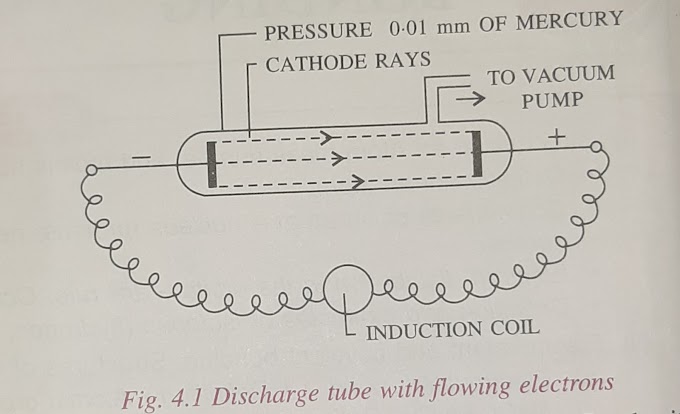Transpiration | Definition | Important MCQS question for ICSE and CBSE
5 – Transpiration
Transpiration is needed by plants for creating a suction force for absorbing water and minerals and for cooling down the plant.
Transpiration:
Only 2% of the water absorbed by the roots is used for photosynthesis and other activities. The rest of the water is transpired.
Transpiration is the process of loss of water in the form of water vapor from the leaves and other aerial parts of the leaves.
Demonstration of transpiration:
1. Take a potted plant and cover it with a polythene bag. Keep the setup in sunlight for a few hours. It is noticed that the inner surface of the bag is covered with water droplets. When the collected liquid is added to cobalt chloride paper, it turns pink from blue. Hence, the liquid is water which has been transpired by the leaves of the plant.
2. Three setups are taken now. One setup has a plant covered with a polythene bag. One setup has a plant covered with a polythene bag along with cobalt chloride paper. The third setup has just a cobalt chloride paper in a polythene bag without the plant. After keeping these setups in sunlight for a few hours, we observe that setup A has water droplets inside. Setup B will have water droplets inside and the cobalt chloride paper turns pink. The third setup has no change.
Measurement of transpiration:
1. Weighing method:
A potted plant is weighed before and after keeping in sunlight for a few hours. It is observed that the weight of the potted plant has reduced a little due to the loss of water due to transpiration.
A glass bottle with a side tube is taken. A plant is kept in the bottle through the cork. After keeping the setup in sunlight for a few hours, it is observed that the level of water in the side tube falls. This is due to transpiration. The graduations in the side tube help to calculate the volume of water lost and the weight is calculated.
A test tube is taken filled with water and oil at the top. The plant is introduced in the test tube. The setup is places in sunlight for a few hours. The oil present prevents evaporation of water. Calculating the weight before and after, we find the weight has reduced due to transpiration.
2. Potometer method:
Farmer’s potometer and Ganong’s potometer help to calculate amount of water intake by the plant. Darwin’s potometer demonstrates the suction force created in the plant due to transpiration. Garreau’s potometer demonstrates unequal transpiration from the two surfaces of a dorsiventral leaf.
Ganong’s potometer:
A twig of some plant is introduced in the apparatus filled with water completely without any space. An air bubble is introduced in the horizontal beaker. As transpiration occurs, the air bubble also moves forward due to loss of water. With the provided scale, the amount of water vapour taken in by the plant is calculated. The bubble can be brought back to its original place by pouring more water into the reservoir.
Precautions:
- The potometer should be completely water tight.
- The twig should be cut obliquely under water so that it has more area to absorb water and no air enters inside.
Limitations:
- Introduction of air bubble is not easy.
- The twig may die soon.
- Changes in air temperature affects the position of bubble.
Kinds of transpiration:
- Stomatal transpiration
- Cuticular transpiration
- Lenticular transpiration
Stomatal transpiration:
During daytime, the stoma in leaves remain open to let in carbon dioxide for photosynthesis. Transpiration occurs through these openings. There are 1,000 – 10,000 stoma per cm square of leaf. The stoma is surrounded by guard cells. This transpiration occurs due to diffusion. Water moves from its area of high to low concentration. The cells near the stomata also lose water due to turgor pressure. Due to cohesion between molecules of water, all the water is drawn out and transpired. This force of attraction helps in movement of water in tall trees.
More transpiration occurs from the under surface of a dicot leaf as it has more stomatal openings. This can be proved by an experiment. A dicot leaf is taken and cobalt chloride paper strips are fixed to both sides of the leaf. The paper in the under surface turns pink slower than the paper on the upper surface.
Transpiration does not occur once the stomata close. During daytime, the stomata remains open as the guard cells are turgid. If the water content of the leaf falls, the guard cells become flaccid and transpiration is prevented. Plants like balsam have their leaves wilted during daytime as the rate of transpiration exceeds the rate of absorption of water by the roots. The turgid condition of the leaves is recovered during evenings and nights. Stomatal transpiration is controlled by the plants by adjusting the size of the stomata.
Cuticular transpiration:
Cuticles are waxy coatings secreted by the epidermis on the two surfaces of leaves. It is made to prevent transpiration but it differs with the difference in thickness of the cuticle. Desert plants have thick cuticles to prevent transpiration. Transpiration can occur through cuticles and is called cuticular transpiration.






0 Comments
Hope Everyone Reading my posts are gaining KNOWLEDGE and able to know something new and informative.
📚📖📕🧾📝😅
Sharing is Caring. So please share this website with everyone you know so that they can also improve their KNOWLEDGE !!!